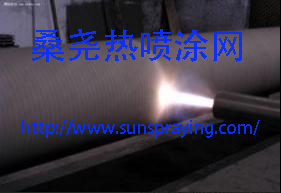Hydroxyapatite (HA) coatings deposited on titanium alloy substrates have the ability to induce new bone in-growth and subsequently increase fixation stability and, thus, are widely used in clinical applications. Among the problems experienced by HA coatings in contact with tissue, loosening is common. It is believed that the amorphous phase, which has higher solubility than crystalline HA, in the coatings, can accelerate the fixation of the implant with the bony tissues and promote fast bone remodelling and attachment. But a high content of amorphous phase in the coating can cause excessive dissolution and consequently reduce the reliability of the implants. Furthermore, the existence of immoderate amorphous phases at the interface of the HA deposit and metal alloy implant could be detrimental to the long-term survivability of the implant as the interface may come into direct contact with bony tissues some period after implantation. Therefore, post-spray treatment is needed to crystallize the amorphous phase and remove transitional or high-temperature phases from the coatings. Among the processes adopted, heat treatment was thought of as one of the most effective methods, and has received much attention. Controlling the amount and the location of the amorphous phase is very important for the proper functioning of the coated appliance.

本文由桑尧热喷涂网收集整理。本站文章未经允许不得转载;如欲转载请注明出处,北京桑尧科技开发有限公司网址:http://www.sunspraying.com/
|

